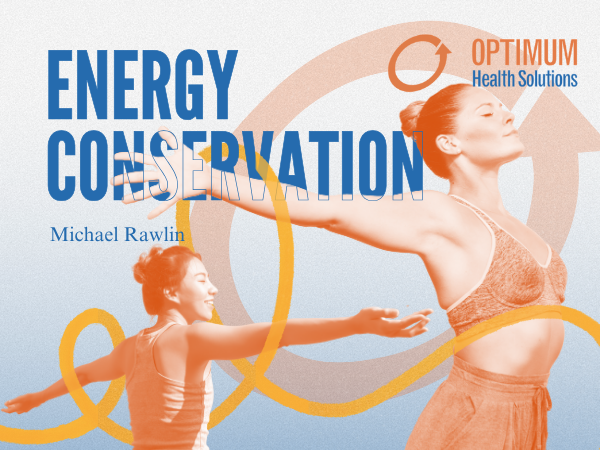What is energy conservation?
Energy conservation is how our daily tasks or activities are done or adapted to reduce pain, fatigue or joint stress. Everything we do, from waking up in the morning to going to bed at night, can be called an activity that uses energy. Using your body efficiently and planning when you complete activities can save energy and ultimately increase or maintain your independence in completing tasks.
People who can benefit from energy conservation techniques include but are not limited to, people diagnosed with Multiple Sclerosis, heart or lung disorders, Motor Neurone Disease, repetitive use injuries and general de-conditioned clients.
This is where an Occupational Therapist can help by working with you to implement techniques to reduce fatigue and increase independence. There are many energy conservation techniques, but in the Occupational Therapy world, we summarise all these techniques into something called the 6 P’s. This stands for Prioritise, Plan, Positioning, Pace yourself, Positive attitude, and Pursed lip breathing.
Prioritise & Plan:
- Create a priority list of activities you need to complete.
- Plan those activities into your daily schedule by rotating heavy and light tasks.
- Eliminate unnecessary steps of each task.
Positioning:
- Change your positioning or the ways you complete your daily activities.
- Examples include:
- Sitting down while you get dressed to avoid standing for too long.
- Avoid bending over for too long or raising your arms above shoulder level.
- Avoid positions that may impact your breathing, e.g., slumped where your chest can’t expand fully.
Pace Yourself:
· Keep a slow and steady pace while completing each task.
· Listen to your body and rest before you become exhausted.
· Never rush to complete an activity.
Positive Attitude:
· Having a positive mindset is extremely important.
· Focus on what you CAN do instead of what you can’t do.
· Adapt your activities so you can do them.
Pursed Lip Breathing
· By using a breathing technique, you can control your breathing, making the activity easier.
· This style of breathing is where you blow air out between your pursed lips in a slow and controlled manner whilst doing an activity.
By working with an Occupational Therapist, you can work together to create and individualise a 6 P’s energy conservation plan to reduce fatigue and increase independence throughout your daily tasks.
For more information about our Occupational Therapy Services, please get in touch with us at 02 8599 6284
ABOUT THE AUTHOR:
Michael Rawlin is a certified Occupational Therapist practicing out of the Optimum Health Solutions Thornleigh clinic.








